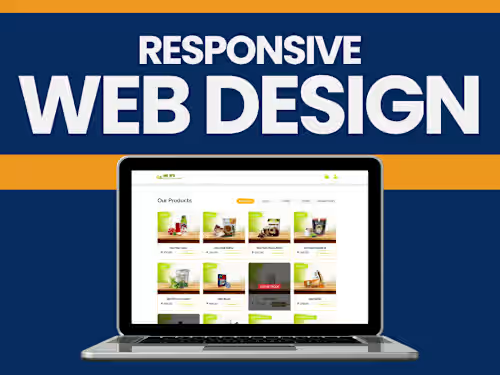
Responsive Web Design
Contact for pricing
About this service
Summary
What's included
Planning and Research Deliverables
Project Brief: A document outlining the goals, target audience, and key design considerations for the responsive website. Wireframes (Low-Fidelity): Device-specific wireframes for desktop, tablet, and mobile to outline the layout and structure. Responsive Grid System: A defined grid system (e.g., Bootstrap or custom grid) is used to ensure consistency across all screen sizes.
Design Deliverables
High-Fidelity Mockups: Mockups for key breakpoints: desktop, tablet, and mobile (e.g., 1440px, 768px, 375px). Pixel-perfect designs showcasing how elements will adapt to different screen sizes. Typography Scaling: A style guide specifying font sizes, line heights, and weights for each device type. Color Palette and Theme: Defined colors with accessible contrast ratios for all screen sizes. UI Components: A library of reusable components like buttons, navigation menus, and forms designed for responsiveness. Style Guide: Documentation for branding elements, spacing, and visual hierarchy adapted for responsiveness.
Development Deliverables
Responsive HTML and CSS Code: Clean, semantic HTML and CSS files optimized for responsiveness. Media Queries: Breakpoints are implemented in the CSS to adjust layouts for various devices. Flexible Grid and Layouts: Grid-based structure using frameworks (e.g., Bootstrap, Tailwind) or custom CSS. Fluid Images and Videos: Media that scales proportionally and maintains aspect ratios across screen sizes. Testing Results for CSS Frameworks: Verification of how frameworks like Bootstrap or custom grids perform.
Interactive Elements
Responsive Navigation Menus: Fully functional menus that adapt to smaller screens (e.g., dropdown or hamburger menus). Touch-Friendly Elements: Interactive elements optimized for touch devices (e.g., larger buttons, proper spacing). Responsive Forms: Forms that scale correctly and maintain usability on all devices.
Testing and Quality Assurance
Cross-Browser Testing Report: Compatibility verified on major browsers (Chrome, Firefox, Safari, Edge, etc.). Device-Specific Testing: Testing was performed on different screen sizes (e.g., desktops, tablets, smartphones). Performance Optimization: Minimized CSS, JS, and image files for faster loading on mobile devices. Lighthouse report for mobile and desktop performance. Accessibility Compliance Testing: WCAG-compliant design for usability by all users.
Documentation
Responsive Design Guidelines: Detailed documentation for maintaining and extending the responsive design. Codebase Documentation: Comments in the code explaining media queries, grid setup, and breakpoints. Handoff Files: Final design files (Figma, Adobe XD, Sketch). Development files and assets (HTML, CSS, JS, images).
Deployment and Post-Launch Deliverables
Live Website: Fully responsive website deployed to a staging or live server. Training for Content Management (Optional): Guidance for updating content within the responsive framework. Post-Launch Support (Optional): A plan for handling feedback, bugs, and improvements after deployment.
Industries





